Catalogue > List by artist
Browse the entire list of Rencontre Internationales artists since 2004. Use the alphabetical filter to refine your search. update in progress
Hira Nabi
Catalogue : 2020All That Perishes at the Edge of Land | Documentary | hdv | color | 29:48 | Pakistan | 2019
Hira Nabi
All That Perishes at the Edge of Land
Documentary | hdv | color | 29:48 | Pakistan | 2019
In this docu-fictional work, ‘Ocean Master’ a container vessel is anthropomorphized, and enters into a dialogue with several workers at the Gadani yards. The conversation moves between dreams and desire, places that can be called home, and the structural violence embedded in the act of dismembering a ship at Gadani. As the workers recall the homes and families they left behind, the long work days mesh indistinguishably into one another, the desperation that they carry with them like shackles rises to the forefront, and they are forced to confront the realities of their work in which they are faced with death every day. How may they survive and look towards the future?
Hira Nabi is a filmmaker and visual artist, based in Pakistan. Her work thinks through the value associated with labor, networked industrial practices, botanical migrations and their impact upon cultural identities, and notions of homemaking. She lives and works in Pakistan.
Tomomichi Nakamura
Catalogue : 2010Ari | Animation | dv | color | 11:0 | Japan | 2008
Tomomichi Nakamura
Ari
Animation | dv | color | 11:0 | Japan | 2008
Ants and a crow in this work symbolize intermediaries between a big man, a small man, and a pregnant girl. It projects complexities of life and death in this living world. Through phantasmagoria, it reverses an ordinary image of life and death, and questions its human-centric view.
Nakamura Tomomichi (Male) Nationality: Japanese Birth: Jan. 10 1972
Mayumi Nakazaki
Catalogue : 2011hunt hunter hunted | | dv | color | 13:0 | Japan | 2009
Mayumi Nakazaki
hunt hunter hunted
| dv | color | 13:0 | Japan | 2009
It consists of a video footage of a socializing event for people and their dogs in the central park in New York City and the voice over. The event includes activities such as the Best in Park dog show, games, contests, and agility tests, etc. The voice over is not directly related to the event itself, but written based on a conversation between two artists dealing with photography. The artists have photographed hunting scene, and they are looking at their pictures of dead animals. This work investigates how we relate to animal, and questions our industrialized world surrounded by animal imagery.
Born in Japan and based in the Netherlands since 1994, Mayumi graduated from Gerrit Rietveld Acadmy in 1999. She is an alumna of residency programs such as Rijksakademie van Beeldende Kunsten in Amsterdam (2000-2001), Location One in New York (2005-2006). Exhibitions/presentations include: Jamaica Center for Arts and learning in NY, Macy Art Gallery Colombia University New York/Art Basel Miami Verge Fair, Kunstpavilion Zagreb Croatia, Stedelijk Modern Art Museum Amsterdam, The Netherlands Institute for Media Art, and Viper International Film Video and New Media Festival, Basel. She has received awards and grants including the Japanese government overseas study program, Fonds bkvb NL, Rene Coelho Prize from Netherlands Institute for Media Art Amsterdam, among others.
Mai Yamashita Naoto Kobayashi
Catalogue : 2007Miracle | Experimental video | dv | color | 3:10 | Japan | 2004
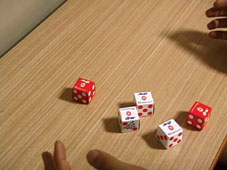
Mai Yamashita Naoto Kobayashi
Miracle
Experimental video | dv | color | 3:10 | Japan | 2004
In this piece, five dice are thrown. No matter when they are thrown, they show the same spots. It hints that hundreds, thousands even, of failed miracles definitely exist, that is to say in "daily-life". (Actually, dice were thrown every day for two months.)
The Japanese artist duo Mai Yamashita (born 1976) and Naoto Kobayashi (born 1974) work in the field of multi-media. Both of them studied at MFA Tokyo National University of Fine Arts and Music. Since their arrival in Europe in 2004, they have been living and working in Europe. They have participated in major international exhibitions and festivals: Philip Morris K.K. Art Award 2002 "The First Move", Tokyo International Forum, Japan; transmediale.06, Akademie der Künste, Berlin, Germany; ARS 06, The Museum of Contemporary Art KIASMA, Helsinki; LichtRouten Lüdenscheid, Lüdenscheid, Germany; etc.
Catalogue : 2007Release of mineral water | Experimental doc. | dv | color | 5:33 | Japan, Germany | 2003
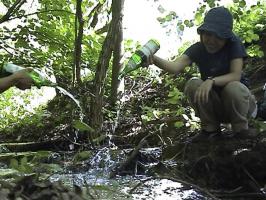
Mai Yamashita Naoto Kobayashi
Release of mineral water
Experimental doc. | dv | color | 5:33 | Japan, Germany | 2003
Bottles of German mineral water, "Tonissteiner", were bought from a package store in Japan and taken to their source, the Eifel region in Germany, where they were released.
The Japanese artist duo Mai Yamashita (born 1976) and Naoto Kobayashi (born 1974) work in the field of multi-media. Both of them studied at MFA Tokyo National University of Fine Arts and Music. Since they came to Europe in 2004, they have been living and working in Germany. They have participated in major international exhibitions and festivals: Philip Morris K.K. Art Award 2002 "The First Move", Tokyo International Forum, Japan; transmediale.06, Akademie der Künste, Berlin, Germany; ARS 06, The Museum of Contemporary Art KIASMA, Helsinki; LichtRouten Lüdenscheid, Lüdenscheid, Germany. etc.
Francis Naranjo
Catalogue : 2010Los colores de la libertad: Blanco | Video | dv | color | 10:26 | Spain | 2010
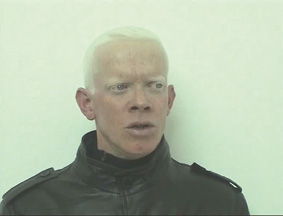
Francis Naranjo
Los colores de la libertad: Blanco
Video | dv | color | 10:26 | Spain | 2010
Francis Naranjo
Catalogue : 2015EN UN PAIS LEJANO: UTOPOS | Video | | color | 4:50 | Spain | 2013
Francis Naranjo
EN UN PAIS LEJANO: UTOPOS
Video | | color | 4:50 | Spain | 2013
This is an experimental video work based on the premise of the introductory text: In a very far land, there exist some mythological creatures called SHICHAS. They combine the different gender alternatives and have the quality to absorb all negative energies keeping them inside. The whole piece has been built using a technique that links photograms together. It starts with a white screen where a set of black rectangles progressively spread on the surface of the image. Then, this image merges with another where some characters appear, who have their eyes covered with rectangles which hide their identities. This image represents the main hall of a geriatric, where we can see many residents whose memories are now defeated by their absence of identity. The work ends with a review of moments represented by souvenirs and the twist of those creatures that absorb the negative energy and stand for the globality, now sick and amnesic. The soundtrack is made with the sounds of corporal fluids.
FRANCIS NARANJO 1961, Santa María de Guía. Gran Canaria. España http://www.francisnaranjo.blogspot.com/ INDIVIDUAL PRESENTATIOS (SELECTION) 2014. Discordancias. Parque Cultural de Valparaíso. Chile. En un país lejano: utopos. Club Kitel Atacama. Bahía Inglesa. Copiapó. Chile. 2013. La paz armada. Centro de Arte Contemporáneo Wilfredo Lam. La Habana. Cuba. SAKER i LIVET . Galleri Lokomotiv. ÖKKV Kulturfabriken. Ömsköldsviks. Suecia. EUROPA (El continente triste). Centro Cultural de España. La Paz. Bolivia. 2012. La coleccionista de luces. Museo de Arte Contemporáneo. MAC. Santiago de Chile. Chile. White. Librería Fayad Jamís. XI Bienal de La Habana. Cuba. 2011. Personne n’est plus. Galería del Institut Français de Madrid. España. None is more. Instituto Cervantes de Rabat. Marruecos. ….agosto 2007…. Inauguración de Centro de Cultura Contemporánea San Martín. Cabildo de Gran Canaria. Las Palmas de Gran Canaria. España. Smile. Fundación Municipal de Cultura, Educación y Universidad Popular. Centro de Cultura Antiguo Instituto. Sala 1. Ayuntamiento de Gijón. España. GROUP PRESENTATIONS (SELECT) 2014. Cruces. Museo Nacional de Arte. La Paz. Bolivia. Festival de cine EL LUGAR SIN LÍMITES. Quito, Guayaquil, Manta, Cuenca. Ecuador. Cruce de colecciones (25 años del Centro Atlántico de Arte Moderno-CAAM).Centro Atlántico de Arte Moderno (CAAM). Las Palmas de Gran Canaria. España. Prohiviciones y Normatibas. Gabinete de Hygiene. Mercado de Tapineria. Valencia. España. 2013. SIART. Bienal de Arte Internacional de Bolivia. 8ª Versión. La Paz. Bolivia. V Semana de Vídeo Iberoamericano. Centro Cultural de España. La Paz. Bolivia. Cartografías de lo (im)posible. Centro de Arte Contemporáneo Wilfredo Lam. La Habana. Cuba. 12 fotos para 2013. S/t Espacio Cultural. Las Palmas de Gran Canaria. España. V Semana de Vídeo Iberoamericano. Filmoteca de Andalucía. Córdoba. España. 2012. Topographies virtuelles. Rencontres Internationales Paris/Berlin/Madrid. Palais de Tokyo. París. Francia. Reinventar la Isla 2. San Martín Centro de Cultura Contemporánea. Las Palmas de Gran Canaria. España. ALZHEIMER. Parque Cultural Ex Cárcel. Valparaíso. Chile. Identités. Recontres Internationales Paris/Berlin/Madrid. Haus der Kulturen der Welt. Berlín. Alemania. Olympic Fine Arts “OFA 2012”. Barbican Arts Centre. Londres. Reino Unido. Artistas de la Galería. Galería AFA. Santiago de Chile. Mulier-Mulieris. Museo de la Universidad de Alicante. Alicante. España. 11ª Bienal de la Habana. Prácticas artísticas e imaginarios sociales. La Habana. Cuba. A través del cristal. (Visiones fotográficas en la Colección del CAAM). Museo de Esculturas "Abraham Cárdenes". Tejeda. Gran Canaria. España. ArtBooks. Centro de Arte La Regenta. Las Palmas de Gran Canaria. España. 25 años de La Regenta. Centro de Arte La Regenta. Las Palmas de Gran Canaria. España. 2011. III Semana de vídeo Iberoamericano. Filmoteca de Andalucía. Córdoba. España. Revelaciones.Objetos, metáforas y ficciones en la colección del CAAM. CAAM - Sala San Antonio Abad. Centro Atlántico de Arte Moderno. Las Palmas de Gran Canaria. España. Identités. Recontres Internationales Paris/Berlin/Madrid. Centre Pompidou. París. Francia. Tesoros de los Museos del Cabildo de Gran Canaria. Colección del CAAM. Salón Noble del Edifici del Rellotge. Barcelona. España. Metamorphose. Recontres Internationales Paris/Berlin/Madrid. Auditórium del Ministerio de Cultura. Madrid. España. Creative Insomnia – Red night. Atelier Meta-morphic. Madrid. España. Longitudes de onda. Espacio de arte OTR. Madrid. España. Metamorphose. Recontres Internationales Paris/Berlin/Madrid. Haus der Kulturen der Welt. Berlín. Alemania.
Catalogue : 2013Return | Video | hdv | color | 8:12 | Spain | 2012
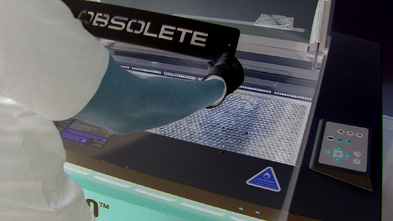
Francis Naranjo
Return
Video | hdv | color | 8:12 | Spain | 2012
Return is the way back. The journey in the reverse direction. An alternative approach to the beginning. Then, from there, to recover the choice of starting " the new" trip. To get back lucidity from obsolescence.
Francis Naranjo is a Spanish artist born in Santa María de Guia, in the Canary Islands, in 1961. He has produced videos and installation pieces. His work develops problem areas pertaining to the society of information, highly technological, in which we are being controlled or in which we control, as well as globalization and the general use of new technologies. Among other places, his work has been exhibited in the in different cities of the world like Santiago de Chile, Berlín, New York, Göteborg, Miami, Uppsala, Madrid, París, Sevilla, Valencia, Casablanca, Tel Aviv, Montreal, South Korea, La Habana, etc.
Catalogue : 2012DISTOPIA EN EL SISTEMA BINARIO | Experimental video | dv | black and white | 7:21 | Spain | 2011
Francis Naranjo
DISTOPIA EN EL SISTEMA BINARIO
Experimental video | dv | black and white | 7:21 | Spain | 2011
The protagonist of the video is located on a white, sterilized stage without any possibility for us to be distracted from the speech: a person defined as transgender tells us, opened heart, but concealing his/her identity, his/her experience for defending being himself/herself, far from the placements of gender and sex. After all sex is biological, but gender is a social construct and as such is built and is changed. The content of his speech, also by the concealment of his/her identity, can be extrapolated to other areas of a binary and Manichean society that feels more secure to pigeonholing people. Therefore, Dystopia in the binary system is presented more as a space of visibility of diversity.
Francis Naranjo is a Spanish artist born in Santa María de Guia, in the Canary Islands, in 1961. He has produced videos and installation pieces. His work develops problem areas pertaining to the society of information, highly technological, in which we are being controlled or in which we control, as well as globalization and the general use of new technologies and the human condition. Among other places, his work has been exhibited in the in different cities of the world like Santiago de Chile, Berlín, Nueva York, Göteborg, Miami, Uppsala, Madrid, París, Sevilla, Valencia, Casablanca, Tel Aviv, Montreal, South Korea, etc.
Catalogue : 2011Smile | 0 | dv | color | 1:10 | Spain | 2009
Francis Naranjo
Smile
0 | dv | color | 1:10 | Spain | 2009
A voice in of us warns before the slogan that is repeated constantly: HELP, in which a character with their backs to appears right next to a loudspeaker, from where presumably comes the slogan; the character tour in a fused one giving the round and running against the camera, here a smile is generated that it closes the work.
Francis Naranjo is a Spanish artist born in Santa María de Guia, in the Canary Islands, in 1961. He has produced videos and installation pieces. His work develops problem areas pertaining to the society of information, highly technological, in which we are being controlled or in which we control, as well as globalization and the general use of new technologies. Among other places, his work has been exhibited in the in different cities of the world like Santiago de Chile, Berlín, Nueva York, Göteborg, Miami, Uppsala, Madrid, París, Sevilla, Valencia, Casablanca, Tel Aviv, Montreal, South Korea, etc.
Catalogue : 2009...agosto 2007... | Experimental video | 0 | color | 18:0 | Spain | 2008

Francis Naranjo
...agosto 2007...
Experimental video | 0 | color | 18:0 | Spain | 2008
?August 2007? (Francis Naranjo, video made in 2008, Spain, in Spanish with English subtitles, based on a poetic text; duration 18 minutes, PAL) This video is the result of the collaboration between three creative disciplines: image, Francis Naranjo; music, Jose Manuel López López; poetry, Dionisio Cañas. The video ?August 2007? is a beam of light, an encounter, of visual, acoustic and poetic information. Three elements, image, music and word, are combined in the virgin screen. Risky and a looked for encounter of three nomadic planets that floated in the uncertain space of pre-creation, of a future event: a video (Francis N), a musical composition (Jose Manuel L L), a poem (Dionisio C). The narrative resources of image, music and poetry are synchronized by the aesthetic and existential emotion. The three spaces, image, music and poetry, are interlaced creating a spider web in which the glance, the ear and the subconscious mind, that ?is waked up? by the poetic word, catch the spectator in a mortal trap: the one to see himself reflected in the video. The three different concepts of time, image, music and poetry, are a unique labyrinth which only the spectator who does not have a heart leaves undamaged, but the sensible spectator slides tenderly to the exit of the video-labyrinth, a flowery precipice, a creative emptiness, the overwhelming end of a white screen that is not a end but a beginning.
FRANCIS NARANJO 1961, Santa María de Guía. Gran Canaria, España EXPOSICIONES INDIVIDUALES 2008 Re:move. Final Release. Intervenciones en la fachada del Recinto Ferial de A Coruña, EXPOCoruña. España. Mente de adentro. La Nave Espacial. Sevilla. España. 2007 La condición humana / La condition humaine. Instituto Cervantes. París. Francia. Tell me more. Galería AFA. Santiago de Chile. 2006 La línea. (Trama/La línea, junto a Juan Castillo). Galería Gabriela Mistral. Santiago de Chile. Trazo continuo visible o imaginario. Espai d?Art ?La Llotgeta? (CAM). Valencia. España. 2005 illuminazioni urbane. Ecoteca. Pescara. Italia. Red home. Intervención permanente en el edificio de Canarias Cultura en Red (Gobierno de Canarias). Las Palmas de Gran Canaria. España. 2004 IN/OUT. Centro de Arte Juan Ismael. Cabildo de Fuerteventura. España. Iluminaciones. Inauguración de la Casa de la Cultura de Santa María de Guía. Gran Canaria. España. Red time. Kulturprojekt Röda Sten. Göteborg. Suecia. Terapia entrópica. Biblioteca del Gabinete Literario. Las Palmas de Gran Canaria. España. 2003 Terapia entrópica. 108 Contemporary Art. Miami. USA. Tráfico (TRÁFICO). Museo de Arte Contemporáneo (MAC), Santiago de Chile. 2002 White time. Centro de Arte La Regenta. Las Palmas de Gran Canaria. España. White time. Centro de Arte La Granja. Santa Cruz de Tenerife. España. Bakom Ansiktet (Detrás del Rostro). Ekeby Qvarn Art Space. Uppsala. Suecia. 2001 Orden cuántico. Foto-Ars. Lanzarote. España. 2000 The new world border. Galería Por Amor A Arte. Oporto. Portugal 1999 Toponimias. Horno de La Ciudadela. Pamplona. España. 1998 In a Faraway Country, u-topos. (EVENTA 4). Ekeby Qvarn Art Space. Uppsala. Suecia. EXPOSICIONES COLECTIVAS 2008 Ideas y propuestas para el arte en España. Arco?08. Stand del Ministerio de Cultura español. Recinto Ferial Juan Carlos I. Madrid. España. A ras de suelo. Galería Rosa Santos. Valencia. España. Hyper Cinema. (Rencontres Internationales Paris/Berlin/Madrid). Complejo El Aguila. Comunidad de Madrid. Opening. (Rencontres Internationales Paris/Berlin/Madrid). Museo Nacional Centro de Arte Reina Sofía. Madrid. ArteBA? 08. 17 Feria de Arte Contemporáneo. Galería AFA (Santiago de Chile) Buenos Aires. Argentina. Prohiviciones y Normatibas. Off Limits. Madrid. Eröffnungsveranstaltung. (Rencontres Internationales Paris/Berlin/Madrid). Haus der Kulturen der Welt. Berlin. Alemania. Colección de invierno. Galería AFA. Santiago de Chile. Parejas. Colección Antonio P. Martín. Centro de Iniciativas de La Caja de Canarias. CICCA. Las Palmas de Gran Canaria. España. Rastros. Casa de Los Coroneles. La Oliva. Fuerteventura. España. ArtBo?08. Galería AFA (Santiago de Chile). Feria Internacional de Arte de Bogotá. Colombia. Buenos Aires Photo 2008. Galería AFA (Santiago de Chile). Palais de Glace. Buenos Aires. Argentina. 2007 7.1 Distorciones. Documentos. Naderías y Relatos. Centro Atlántico de Arte Moderno (CAAM). Las Palmas de Gran Canaria. España. Arco?07. Galería Pack (Milán). Recinto Ferial Juan Carlos I. Madrid. España. Deambulatorios de una jornada, en el principio y el proyecto Tindaya. Intervención en el Malpaís de la Oliva. Cabildo de Fuerteventura. España. I Encuentro entre dos Mares.Bienal São Paulo ? Valencia. La Nave, Puerto de Sagunto. Valencia. España. From the Vault. Galleria Pack. Milano. Italia. Signos de la Ciudad. Centro Andaluz de Arte Contemporáneo (CAAC), Sevilla. España. Iberoamérica Glocal: Entre la Globalización y el Localismo. Casa de América. Madrid. 8ª Bienal de Vídeo y Nuevos Medios de Santiago de Chile. Chile. Rescate. Centro Cultural Matucana 100. Santiago de Chile. Signos de la Ciudad. Centro de Cultura Antiguo Instituto. Ayuntamiento de Gijón. Rencontres Internationales Paris/Berlin/Madrid. Centre Georges Pompidou. Cinema L? Entrepot. Instituto Cervantes. París. 2006 Arco?06. Galería Pack (Milán) y Galería Punto (Valencia). Recinto Ferial Juan Carlos I. Madrid. España En español - spanish as a global language - an arts festival. Instituto Cervantes. Nueva York. USA. Sin miramiento alguno [arte iberoamericano actual], 9ª bienal de la Habana, La Habana, Cuba. Las ciudades invisibles. V Festival Internacional de Cortometrajes-Almería en corto. Patio de Luces de la Diputación Provincial de Almería. España. Pabellón dd, versión final. Centro de Arte Juan Ismael, Cabildo de Fuerteventura. España. En el país de los ciegos. [video art screening]. Instituto de América / Centro Damián Bayón, Santa Fe, Granada, España. New Mystics. Sala de Exposiciones Cabrera Pinto, La Laguna, Tenerife. España. Vigilancia. AYN Centro de Arte. Madrid. España. CITÉINVISIBLE/INVISIBLE CITY. Bienal MIVEAM. New National Library of the Quebec. Montreal. Canadá. PULSAR. International event. The Caracas Contemporary Art Museum. Venezuela. XIX BIENNAL IBIZAGRAFIC?06. Museu d?Art Contemporani d?Eivissa. Islas Baleares. España.
Catalogue : 2008acto frívolo | Art vidéo | 0 | color | 8:46 | Spain | 2007
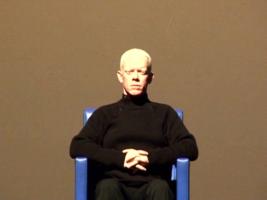
Francis Naranjo
acto frívolo
Art vidéo | 0 | color | 8:46 | Spain | 2007
Behind always remind this part of everything, this part that everyone knows, this part that none see and that is so because a prohibition, it is because we can?t remember the way to look at things lacking by force of such a habit in force the principle the rule for hiding origins and roots keeping ourselves thinking that we come from nowhere, from nothing and more if we talk of art; for too many people a subject that only depends on creativity or equally depending on alien forces, like the smile of the trapeze artist that hides his effort to keep in balance, or like the cry of the clown that hides the origins of his laugh. It is always that way and we are used to accept that things happen without a reason, that when things show you the inner part, what is behind, to refuse to any kind of understanding and this is your aim toward what is moving in front of you and them you look for a judgement that you will never get because your luck of habit, as I have said before. And moreover in the slippery slope this Christmas present that we use to call art. Although there are a few artists, and I will not give now that uncertain list, that keep on trying to show the hidden efforts that is behind the trapeze artist?s smile or the clown´s sorrow; Like Francis Naranjo, and I can hardly remember the first time he fixed the cables over one of his characteristic environments, that in the beginning were mere installations and today have become really heteroclite worlds. Those cables where there in order to aloud you in seeing things in the family tree, moreover in such extreme cases like Francis Naranjo´s first works always in the border of the unbelievable. Judge it by yourself and say that if this little environment of absolute reality could not seem a fake without the inclusion of the inner part of the scene, if it would not be consider in a different and colder way without the drama you have seen disentangled on stage, as you can see in the length of the curtains and number of the stalls. In front of such evidences, you just can think the main actor is no so important because in the middle of the inner part he becomes our equal, like the drag queen who undresses herself showing the set of fake attributes that conform her appearance. It is like our own life that runs in front of us without a certain reason. A reason that you ignore just because never have been aloud for looking behind and therefore you luck of such a habit. Nilo Casares. 2007
FRANCIS NARANJO 1961, Santa María de Guía. Gran Canaria, España individual exhibitions (selection) 2007 La condición humana / La condition humaine. Instituto Cervantes. París. Francia. Tell me more. Galería AFA. Santiago de Chile. 2006 La línea. (Trama/La línea, junto a Juan Castillo). Galería Gabriela Mistral. Santiago de Chile. Trazo continuo visible o imaginario. Espai d?Art ?La Llotgeta? (CAM). Valencia. España. 2005 illuminazioni urbane. Ecoteca. Pescara. Italia. 2004 IN/OUT. Centro de Arte Juan Ismael. Cabildo de Fuerteventura. España. Red time. Kulturprojekt Röda Sten. Göteborg. Suecia. 2003 Terapia entrópica. 108 Contemporary Art. Miami. USA. Tráfico (TRÁFICO). Museo de Arte Contemporáneo (MAC), Santiago de Chile. collective exhibitions (selection) 2007 Arco?07. Galería Pack (Milán). Recinto Ferial Juan Carlos I. Madrid. España. Deambulatorios de una jornada, en el principio y el proyecto Tindaya. Intervención en el Malpaís de la Oliva. Cabildo de Fuerteventura. España. I Encuentro entre dos Mares.Bienal São Paulo ? Valencia. La Nave, Puerto de Sagunto. Valencia. España. From the Vault. Galleria Pack. Milano. Italia. Signos de la Ciudad. Centro Andaluz de Arte Contemporáneo (CAAC), Sevilla. España. Iberoamérica Glocal: Entre la Globalización y el Localismo. Casa de América. Madrid. 8ª Bienal de Vídeo y Nuevos Medios de Santiago de Chile. Chile. Rescate. Centro Cultural Matucana 100. Santiago de Chile. 2006 Arco?06. Galería Pack (Milán) y Galería Punto (Valencia). Recinto Ferial Juan Carlos I. Madrid. España En español - spanish as a global language - an arts festival. Instituto Cervantes. Nueva York. USA. Sin miramiento alguno [arte iberoamericano actual], 9ª bienal de la Habana, La Habana, Cuba. New Mystics. Sala de Exposiciones Cabrera Pinto, La Laguna, Tenerife. España. Vigilancia. AYN Centro de Arte. Madrid. España. CITÉINVISIBLE/INVISIBLE CITY. Bienal MIVEAM. New National Library of the Quebec. Montreal. Canadá. PULSAR. International event. The Caracas Contemporary Art Museum. Venezuela. XIX BIENNAL IBIZAGRAFIC?06. Museu d?Art Contemporani d?Eivissa. Islas Baleares. España. 2005 Art Miami. Galería 108 Contemporary Art. Miami. USA. Arco?05. Galería Pack (Milán). Recinto Ferial Juan Carlos I. Madrid. España. Art Cologne. Galería Punto (Valencia). Köln. Alemania. Rencontres Internationales Paris/Berlin. Cinema L? Entrepot. París. 2004 Art Philadelphia 04. Gallery 108 Contemporary Art. Pennsylvania Convention Center. USA. Unidad mínima de habitación. Espai D`art La Llotgeta. CAM. Valencia. España. Seducciones y Pasiones. Espacio C. Camargo. España. _to the other side_ in the context of _unzipping codes_ at Nabi Center in Seoul. South Korea. 2003 Paralelo [3] Meridiano [3]. (Terry Berkowitz, Juan Castillo, Francis Naranjo). El Almacén, Cabildo de Lanzarote, Arrecife. España. Las tentaciones de San Antonio. Centro Atlántico de Arte Moderno (CAAM), Las Palmas de Gran Canaria. España. Pieles. Centro de Arte La Regenta. Las Palmas de Gran Canaria y Colegio de Arquitectos, Santa Cruz de Tenerife. España. Konstens Axel. Konceptkonstmuseum, Rydboholm, Suecia. Observatori?03. Laboratorio internacional de investigación artística. Museo de las Ciencias Príncipe Felipe. Valencia. España. Fotonoviembre. La Recova. Santa Cruz de Tenerife. España.
Catalogue : 2006Iluminaciones urbanas 1 | Art vidéo | dv | color | 4:28 | Spain | 2004
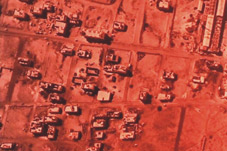
Francis Naranjo
Iluminaciones urbanas 1
Art vidéo | dv | color | 4:28 | Spain | 2004
When Bird Songs are all that Abide Everything flows (?panta rehi?), as Heraclitus of Ephesus said some 2500 years ago. And Francis Naranjo, in his new video series, Iluminaciones urbanas (Urban illuminations), seems to be saying that we can?t see the same street twice, even when, as here, its his own street, because everything changes and nothing abides. The cars that animate the urban landscape aren?t the same cars; the sunlight which illuminates our everyday world varies in brightness and shines through distinct clouds; the neighbors we meet in the street look like mutants, they change clothes and moods, sometimes they greet us, at others they?re in a hurry?And us? How many ?I?s are there in ourselves? Moving images, like he world in Heraclitus? philosophy, seem to endlessly reprise themselves?being always different, the sound of bodily fluids accompany them, reinforcing the notion of bathing in a different river, though the river is always the same. Francis speaks of the continual internal and external flow, as though honing to the belief that there are some things which abide. But our biological fluids seem to always find a different path in the vascular labyrinth of our bodies, just as our human and automotive neighbors seem to create a city distinct from our own city with every passing day; just as we do from our own windows, and just as our neighbors do from theirs, always the same, always inert, always looking out on distinct scenes. In the past, it was thought that poor health came from the corruption or putrefaction of our bodily fluids. And bloody concoctions were created to eliminate them, to expel them from our body to flow toward the gutter. Through his videos Francis seems to puncture our idle everyday memory, drawing blood from our routine. But neither the blood flowing from our consciousness, nor we ourselves, would be the same?And maybe we have to repeat this conceptual bleeding forever in an eternal becoming, because everything flows? The Final Journey, by the Spanish poet Juan Ramón Jiménez (Nobel Prize, 1956) is one of the poems which best reflects this struggle/indecision/dichotomy between our ephemeral condition, our human desire for renewal, and our at times unavowed anxiety for permanence and transcendence: ?And I?ll depart. And the singing birds will abide; and my garden, with its green tree and white well, will abide. Every afternoon the sky will be calm and blue; And the church bells will ring in the belfry, Just like they?re ringing now. Those that loved me will pass away; and the village will renew itself each year; and in that whitewashed and florid corner of my garden my spirit will wander, nostalgic? And I?ll depart, and I?ll be alone, without a home, without my green tree, without the white well, without the calm, blue sky? But the singing birds will abide. And the videos of Francis Naranjo will remain to speak about becoming, about the guise of the false changes until the Final Change arrives.
1961, Santa María de Guía. Gran Canaria, España
Arash Nassiri
Catalogue : 2015Tehran-Geles | | | color | 18:10 | Iran | 2014
Arash Nassiri
Tehran-Geles
| | color | 18:10 | Iran | 2014
Tehran-Geles is a fictional vision of Tehran, set within the urban landscape of Los Angeles. Through an aerial journey, we discover an architectural transposition of the two cities. While flying over the LA boulevards, personal migrant testimonies echo the collective story of the Iranian capital. Downtown, the buildings are saturated with neon signs pulsating with voices that take us on a hallucinatory trip. Parallel to the science fictional genre – where the present is projected into the future – this short film projects the past of Tehran into the Western present. The production of this short film generated an audio-visual `migration`, where aerial shots of Los-Angeles merge with videos filmed in Tehran and later transported by plane, as well as interviews recorded via Skype in different cities around the world.
Born in 1986 in Tehran, Iran, Arash Nassiri works and lives in Paris, France. Arash graduated from the Ecole Nationale Supérieure des Arts-Décoratifs in 2012. He is also a 2014 graduate of Le Fresnoy, National Studio of Contemporary Arts . Arash’s academic achievements include courses at the Paris National School of Fine Arts (Ecole Nationale Supérieure des Beaux-Arts de Paris) in 2007, and at the University of the Arts in Berlin, where he lived in 2010. Arash has showcased his work in exhibitions, both in France and abroad, including the 2011 Galerie du Crous, the 2013 and 2014 Panorama exhibitions, the Venice Biennale of Architecture, and the "From the object to the city" exhibition organized by the National School of Arts in 2010. In July 2014, his work was featured in cultural magazine, Les Inrockuptibles. Arash has also been awarded the 2014 Cote Court Pantin Grand Prize for Video Art and the Les Amis du Fresnoy Prize. His video Tehran-Geles will be featured in the international film festival of Bucharest in Romania next Decembre.
Frederic Nauczyciel
Catalogue : 2018La Peau Vive [Skin Live] | Video installation | hdv | color | 38:0 | France | 2017
Frederic Nauczyciel
La Peau Vive [Skin Live]
Video installation | hdv | color | 38:0 | France | 2017
J’ai invité dans le studio des complices de plusieurs années, issus de la communauté noire transgenre des deux territoires, et d’autres artistes connus ou inconnus, engagés dans des pratiques performatives, masculines et féminines, urbaines et savantes, waaking, krump, art performance, slam... Tous sont reliés par un désir puissant d’inventer leur identité et par une appartenance revendiquée aux marges, réelles et symboliques. Je leur ai proposé de filmer eux-mêmes leurs tatouages, leurs scarifications, leur peau, face à la caméra ; et ce faisant, à échantillonner, une partie de leur histoire.
Frédéric Nauczyciel est artiste visuel. Il vit à Paris et travaille entre Paris et Baltimore. Depuis 2011, il déploie des installations vidéos, des photographies et des performances qui relient les ghettos noirs de Baltimore et la périphérie parisienne, puisant dans la force de langages performatifs tel que le Voguing, les fanfares déambulatoires ou la langue des signes. Ses projets en cours sont des récits mettant en jeu la langue, la trans-communauté, la traversée des lignes de partage. Il développe l’idée d’un “ endroit de confiance “, un espace libre d’assignation où la singularité de chacun existe sans labellisation. Il a exposé au Musée de la Chasse à Paris (2012), au Mac/Val (2012), au Festival d’Avignon (2013), au Palau de la Virreina, Barcelone (2010), au FotoFest International, Houston (2015) entre autres. Ses films ont été montrés aux Rencontres Internationales Paris / Berlin, au Festival Distrital à Mexico City, au Palace Festival à Chicago, etc.
Catalogue : 2016Red Shoes | Video installation | hdv | color | 4:17 | France | 2015
Frederic Nauczyciel
Red Shoes
Video installation | hdv | color | 4:17 | France | 2015
Red Shoes est un rituel. Le vogueur Kendall Mugler (Paris) mets ses talons aiguille rouges, et remplit l’espace d’une énergie dite « dramatique » - c’est à dire : théâtrale, sauvage, hautement technique, audacieuse.
Frédéric Nauczyciel est un artiste visuel français. Il travaille entre la France et les Etats-Unis. Nourri par la danse et le cinéma, il réalise des photographies, des films et des performances. Il construit avec ses sujets des images collaboratives qui tendent vers une hybridation des formes. Il fait appel à l’expérience de la performance pour produire des « images vivantes » qui convient la présence. Depuis 2011, il déploie son travail entre les ghettos noirs de Baltimore et la périphérie parisienne, puisant dans la force des langages performatifs tel que le voguing. Il expose en France (Musée de la Chasse à Paris, Mac/Val, Eté Photographique de Lectoure, Rencontres Internationales de Photographie d’Arles, Festival d’Avignon, Centre Pompidou Paris), à Barcelone (Palau de la Virreina), ou aux Etats-Unis (Washington, Houston, Baltimore et New York). Il est lauréat en 2011 de la Villa Médicis Programme Hors les Murs pour les Etats-Unis (Institut Français), reçoit en 2013 l’Allocation de recherche du Centre National des Arts Plastiques et figure dans la collection du Fonds national d’Art Contemporain (Public # Ceux qui nous regardent, Le temps devant et The Fire Flies, Baltimore). Il est en résidence en Seine-Saint-Denis pour deux années, de 2014 à 2016.
Mario Navarro
Catalogue : 2008The Dreams of Sttaford Beer | Art vidéo | dv | color | 7:48 | Chile | 2007
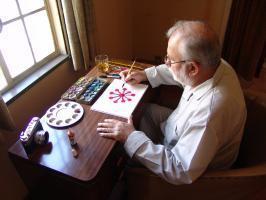
Mario Navarro
The Dreams of Sttaford Beer
Art vidéo | dv | color | 7:48 | Chile | 2007
In 1971, an innovative system of information management and transfer began developing in Chile during the government of President Salvador Allende; the CYBERSYN project, cybernetic synergy or SYNCO, information and control system. In Chilean State owned companies a system for capturing, processing and presenting economic information to be managed in ?quasi? real time, becoming an absolute pioneer in the application of a cybernetic model in mass socio-economic contexts, and based on a convergence of science, technology, politics and cybernetics. In 1972 was constructed a ?futuristic? CONTROL ROOM for to manage information an data. The scientific director of the project was the Britain?s Stafford Beer, father of global cybernetics, In this fictional mise en scène, Stafford Beer imagines in dreams -in a hotel room- how to construct and to implement its project in Chile, but all the time blurredly and apparently drunk, Beer very insistently tries to show a coherent structure of interaction, that nevertheless is not perfect nor correct for anybody more than he.
Mario Navarro (1970), Live and work in Santiago, Chile. He studied visual arts in the Universidad Católica de Chile. Has been invited, as an artist in residence, to Couvent des Récollets, Paris (2003) and recently has been invited to IASPIS, Stockholm. Mario Navarro has participated in numerous international exhibitions, such as Santiago Manifest?, Centro Cultural Matucana100, Santiago (2007), ?Sur Scene?, Chateau de Tours, France (2007), ?XXVII Bienal de São Paulo?, (2006), ?IV Liverpool Biennial ?(2006), ?Busan Biennial?,Korea (2006), ?Efecto Downey?, Espacio Telefónica, Buenos Aires, Argentina (2006). As solo shows it is important to mention: ?Red Diamond?, Salvador Allende Museum, Santiago, (2007), ?Not Like this, like this?, Lakeside Kunstraum, Klagenfurt, Austria (2006), ?Dignidad?, Die Ecke Gallery, Santiago, (2005), ?30 days with nothing?, Public intervention Canal Saint Martin, Paris (2003) As a curator has created the projects ?Daniel Lopez Show?, Withe Box and Roebling Hall, New York (2007), ?Transformer?, Centro Cultural Matucana 100, Santiago (2005) and ?Doméstico?, MAC, Valdivia, Chile (1999)
Elena Näsänen
Catalogue : 2009Night | Video installation | 16mm | color | 6:40 | Finland | 2007
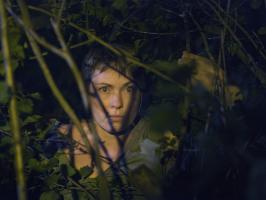
Elena NÄsÄnen
Night
Video installation | 16mm | color | 6:40 | Finland | 2007
A woman exits from a lonesome house into the night. She follows a narrow path, walking into the woods. The darkness surrounds her. She pushes herself through the branches, deeper and deeper into the forest. Night resembles an excerpt from a suspense film, in which dream and reality intervene with each other.
Elena Näsänen (b.1968 in Helsinki) is a visual artists who works with sound, film and video installations. She has studied in Academy of Fine Arts in Helsinki and The Slade School of Fine Art in London. Näsänen?s art lies somewhere between experimental cinema and video art. Her works are based on the simultaneous use of conventional cinematic narrative and its disruption. One defining characteristic of her work is their powerful dramatic soundscape. Elena Näsänen?s works has been shown in several exhibitions, screenings and film/video festivals. For example Museum of Contemporary Art Kiasma, Marco Museum Vigo, The Anna Akhmatova Museum, St. Petersburg, Kyoto Art Center, FACT Liverpool, Anthology Film Archives New York, La casa Ensendida Madrid, Tate Modern London, ZKM Karlsruhe, Rotterdam Film Festival.
Kavich Neang
Catalogue : 2020Dey thmey phlauv kouch | Fiction | 4k | color | 15:21 | Cambodia | 2018
Kavich Neang
Dey thmey phlauv kouch
Fiction | 4k | color | 15:21 | Cambodia | 2018
Phnom Penh at night. Three young hip-hop dancers drive a single motorbike and stop on a muddy deserted road. Nick leaves the others to look for an iPhone he heard was lost in the area. Piseth and Thy discuss their hopes and doubts, and Piseth shows his best dance moves. They meet Leakhena, a young female street vendor whose cart is full of colors.
Kavich NEANG (b. 1987, Phnom Penh, Cambodia) studied music and dance at a young age before graduating in professional design in 2013. In 2010, he directed his first short film, A Scale Boy, as part of a documentary film workshop led by Khmer-French filmmaker Rithy PANH, who also produced his 2013 mid-length documentary film Where I Go. In 2014, he co-founded the independent production company Anti-Archive along with Davy CHOU, Steve CHEN, and PARK Sungho. In 2015, he directed his first two short fictions, Three Wheels, which premiered at Busan, and Goodbye Phnom Penh. A third short fiction, New Land Broken Road, premiered at the 2018 Singapore International Film Festival and won prizes in Kyiv, Tacoma, and Kaohsiung. Kavich NEANG has also joined Busan’s Asian Film Academy, Locarno’s Summer Academy, Talents Tokyo, Docs by the Sea, Luang Prabang Talent Lab, and Cannes Cinéfondation’s Résidence. His 2019 documentary, Last Night I Saw You Smiling, won the NETPAC Award at IFF-Rotterdam, the Special Jury Prize at Jeonju, Best Image at Janela do Recife and two awards at Tokyo FilmEx. His impending first narrative feature, White Building, is now in post-production.
Jürgen Nefzger
Catalogue : 2018The Cloud Machine | Experimental video | hdv | color | 12:35 | Germany, France | 2017
Jürgen Nefzger
The Cloud Machine
Experimental video | hdv | color | 12:35 | Germany, France | 2017
Jürgen Nefzger associe des projets filmiques à son oeuvre photographique centrée sur les rapports entre l’homme et son environnement dominés par les logiques économiques. Avec The Cloud Machine, il présente un film réalisé au sein d’une grande usine d’incinération. Celle-ci vient éclairer son propos, avec cette notion de recyclage, de cycle dans lequel s’inscrivent les sociétés contemporaines. Avec des pointes d’humour, il nous fait partager le quotidien de ces hommes alimentant cette machine à nuages. En dehors des fumées que rejette l’usine, il y a cette idée de boucle immuable induite par une logique consumériste portant les individus vers les centres commerciaux, achetant des produits qui nécessairement seront voués à la destruction. En découle ce constat: finalement, rien ne change malgré les aléas. La crise, mais quelle crise?
Né en 1968 à Fürth en Allemagne, Jürgen Nefzger vit et travaille en France depuis 1991, aujourd’hui entre Paris et Nice. Diplômé de l’école Nationale Supérieure de la Photographie à Arles, il est depuis 2008 artiste enseignant, à l’Ecole Supérieure d’Art de Clermont Métropole puis à l’Ecole Supérieure d’Art de Aix-en-Provence. Il est représenté par la galerie Françoise Paviot, Paris, depuis 2001. Jürgen Nefzger a obtenu le Prix Niépce pour l’ensemble de son travail en 2008. Il est également lauréat de la Villa Médicis Hors les Murs et du Prix Photo du Jeu de Paume. La publication “ Fluffy Clouds ” a reçu le prix du livre photographique en Allemagne. Dans une veine documentaire, Jürgen Nefzger aborde des sujets relevant d’une interrogation sur le paysage contemporain. Observateur critique d’une société consommatrice, il porte son regard sur des paysages marqués par les activités économiques, industrielles et de loisir. Son travail photographique se construit par série, à la chambre photographique, et associe des projets filmés en numérique présentés au sein de ses expositions ou indépendamment. Il édite aussi ses travaux sous formes de livres, en portant une grande attention aux question de narration et de positionnement.
Warren Neidich, Assistant Director Ashiq Khondker
Catalogue : 2020Pizzagate - From Rumor To Delusion | Video | hdv | color | 20:20 | USA, Germany | 2017
Warren Neidich, Assistant Director Ashiq Khondker
Pizzagate - From Rumor To Delusion
Video | hdv | color | 20:20 | USA, Germany | 2017
We have now entered into a new era some have called the post-truth society characterized by a deluge of fictive mediated stories dubbed Fake News. One of these stories, Pizzagate concerns the conspiracy theory, circulated at the end of the Trump-Clinton presidential election, that accused Hillary Clinton and other members of her Democratic election committee of running a childhood sex ring in the basement of Comet Ping Pong pizza restaurant. As preposterous as this is, many people believed it and the story went viral. My PIZZAGATE: FROM RUMOR TO DELUSION as an experimental documentary which uses non-linear video editing techniques to collage extracted You Tube clips with real video taped footage collected on site at the Comet Ping Pong pizzeria investigates the conditions of our now planetary network existence to understand this event and its implications. I utilize the story of the delusional behavior of James Welch who drove up from North Carolina, shotgun in hand, to free the girls as an example of a generalized societal condition addicted to social media. I speculate that we have transitioned from Guy Debord’s Society of the Spectacle to what I am calling The Society of the Neuron in the Attention Economy.
- Theorist, film maker, composer and installation artist, Warren Neidich, who works between Los Angeles and Berlin, brings to any discussion platform a unique interdisciplinary position that he calls “trans-thinking”. The model explores the way cognition is mediated and acted upon by co-extensive cultural inputs consisting of an evolving socio-cultural-political milieu wherein various unequally distributed and contested discursive fields gather and entangle themselves with the plastic brain. The result being what Gilles Deleuze referred to as the image of thought. His works of art have been exhibited internationally including the Ludwig Museum, Cologne, The Whitney Museum, New York City, PS1 MOMA, Long Island City, The ICA London, LACMA, Los Angeles and many others. His one-person exhibition, Rumor to Delusion, premiered at the Zuecca Project Space, during the Venice Biennale, 2019. He is founder and director of the Saas-Fee Summer Institute of Art and is a recipient of the Vilem Flusser Theory Award, Transmediale, AHRB/ACE Arts and Science Research Fellowship, Bristol and The Fulbright Scholarship. Additionally he was former tutor in the departments of visual art, computer science and cultural studies at Goldsmith College London as well as recently serving at Professor of Art at the Weissensee Kunsthochschule, Berlin.
Art Collective Neozoon
Catalogue : 2023Lake on Fire | Experimental doc. | mov | color | 11:0 | Germany | 2022

Art Collective Neozoon
Lake on Fire
Experimental doc. | mov | color | 11:0 | Germany | 2022
LAKE OF FIRE deals with religious filter bubbles in the social network Youtube and thematizes the fear of death and hell as a place of eternal damnation. Old and new iconographies of religious presenters are interwoven with pagan customs and the consequences of dualistic religions and anthropocentrism become visible.
NEOZOON is a female art collective founded 2009 in Berlin and Paris. Their work is based on the principle of collage and investigate sociological questions that deal with speciesism in the Anthropocene. In their video films, the de-and recontextualization of Found Footage / Youtube material is a recurring element. Amongst others NEOZOON´s work was exhibited at Centre Pompidou in Paris, at ZKM in Karlsruhe, at Kunstwerke Berlin and has been shown at national and international film festivals in Oberhausen, Rotterdam, Locarno and New York.
Catalogue : 2015MY BBY 8L3W | Video | hdv | color | 3:3 | Germany | 2014
Art Collective Neozoon
MY BBY 8L3W
Video | hdv | color | 3:3 | Germany | 2014
MY BBY 8L3W Synopsis The thirty track installation MY BBY 8L3W is a video collage about women who present their pets on the internet. The women simultaneously speak the same lines about their love for the animals.
NEOZOON Biography NEOZOON, founded 2009 is a female art collective based in Germany and France. Among others the work and films of the group has been shown at the Centre Pompidou in Paris, at the Transmediale in Berlin, at the Internationale Kurzfilmtage in Oberhausen, at the IFFR in Rotterdam, at the Videonale in Bonn and at the ZKM in Karlsruhe.
Jean Francois Neplaz
Catalogue : 2011ALPINI | Documentary | 16mm | color and b&w | 60:0 | France | 2010
Jean Francois Neplaz
ALPINI
Documentary | 16mm | color and b&w | 60:0 | France | 2010
The restless history of the XXth century in the North of Italy is one « point of seing » which feeds the work, major, of the writer Mario Rigoni Stern. In this ultimate testimony (he died in June, 2008), he accompanies our progress in the imagination of the mountain dwellers of Asiago. The place of the man in the heart of the nature as much as in the heart of the war gets involved in the voice of the writer. Here the territory is a border, the fascism is the present past, the war is registered under a peace of snow? And the man is there.
Jean-françois Neplaz, Elisa ZURLO
Catalogue : 2007L'autre matin... En attendant Mario Rigoni Stern | Experimental doc. | 16mm | color | 11:30 | France, Italy | 2006
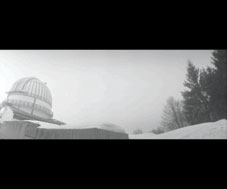
Jean-françois Neplaz, Elisa ZURLO
L'autre matin... En attendant Mario Rigoni Stern
Experimental doc. | 16mm | color | 11:30 | France, Italy | 2006
A walker takes a rough walk through the winter landscapes around Asiago where everything evokes the experiences, the landscapes, and the men narrated by the writer Mario Rigoni Stern. There, the monologue against the war from the one who began writing "A Sergeant in the snow" on the Russian front, gives the walk its entire metaphorical dimension.
Elisa Zurlo studied theatre, cinema, and semiology of the language of visual art in the faculty of arts and philosophy at the University of Bologne under the direction of Umberto Eco. At the Ipotesi Cinema Institute of Padoue, under the tutelage of director Ermanno Olmi, she herself specialized as a director in audiovisual communication in the area of cinema and television. At the same time in Bologne she founded the cooperative 'Les Machines Célibataires' with a group of researchers, for the experimentation and diffusion of new technologies in contemporary art. She has created an impressive amount of work and participated in several exhibitions. A select few include: 1993 - Realization, Giannina Censi, Aérodanseuse Futuriste; 1996 - Realization, Chant végétal à Pachamama coca; 1997-2002 - Assistant to trilogy filmmaker Gianni Toti; 2000 - Installation, "Salitudine", a pyramid of salt and projection of images, for the city of Bologne, European Cultural Capital 2000; 2002-2003 - Multimdeia Installation "Flying Cities", European project with the CICV Montbéliard-Belfort. Elisa Zurlo currently lives in Italy, between the cities of Bologne and Padoue. Jean-François Neplaz holds a degree from IDHEC. His works and exhibitions include: "La Blanche", 1986; International Film Festival of Autrans, "Guide et sa voie", 1987, was awarded; Festival of Epinay 88, "Ante Inferno"; Semaine vidéo des "cahiers du Cinéma", Rue de Montreuil, 1990; Etats généraux du documentaire français Lussas... "Tu", a Polish film, 1990; 6th M. I. V. TV. Montbéliard competition; Forum des images de Valence, 1992, awarded, "Cancer"; Etats généraux du documentaire de Lussas, 1993... "Vivants et nus", 1994, "Signe ascendant", Poème documentaire, 1996, "Besoin de rien", 2000, musical film; and Festival Paris-Berlin 2003. Collaborations: "Abondance", feature length fiction film, 2005, and "Terre d?un homme", feature length documentary project devoted to Mario Rigoni Stern, 2006.
Jean François Neplaz
Catalogue : 2014Si elle Tomber | Experimental doc. | 16mm | color | 32:54 | France | 2013
Jean François Neplaz
Si elle Tomber
Experimental doc. | 16mm | color | 32:54 | France | 2013
Diane Nerwen
Catalogue : 2007FUH2 | Experimental video | dv | black and white | 0:40 | USA | 2006
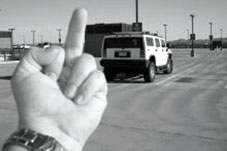
Diane Nerwen
FUH2
Experimental video | dv | black and white | 0:40 | USA | 2006
"FUH2" pays tribute to the participatory website, www.fuh2.com, home of the official Hummer salute. Jammed with image submissions, the site documents a subculture of resistance to Hummerization. Inter-cutting website images with Hummer commercials, this video is a 30-second cathartic rant against the (sub)urban assault vehicle.
Diane Nerwen is a video artist and media arts educator. She has shown her work internationally, including screenings at the Berlin Film Festival, the New York Video Festival, the Guggenheim Museum, NY and Viper International Festival of Film Video and New Media, Basel, Switzerland. She has received a number of grants and awards, including a DAAD Artist in Residence Fellowship in Berlin in 2001. Nerwen was born in Montreal and lives in Brooklyn, NY. Her work is distributed by Video Data Bank, Chicago; Women Make Movies, NY; and Vtape, Toronto.
Catalogue : 2006The sexorcist:revirginize | Experimental video | dv | black and white | 13:0 | USA | 2005

Diane Nerwen
The sexorcist:revirginize
Experimental video | dv | black and white | 13:0 | USA | 2005
The Sexorcist: Revirginize is a psycho-sexual horror thriller starring Britney Spears as a teenager tormented by sexual anxiety and Ellen Burstyn as her frightened, desperate mother. This funny but chilling account of possession, teen angst and moral panic interweaves images and sounds from such films as The Exorcist, Crossroads and Buffy the Vampire Slayer, exposing and satirizing the ideological agenda behind abstinence-based sex education.
Diane Nerwen is a video artist and media arts educator. She has shown her videos internationally, including screenings at the Berlin Film Festival, the New York Video Festival and the Guggenheim Museum, NY. She has received a number of grants and awards, including a DAAD Artist in Residence Fellowship in Berlin in 2001. Nerwen was born in Montreal, and lives in Brooklyn, NY. "Diane Nerwen is a video artist living in New York. Her work explores the intersection of media, politics and everyday life. Her recent tapes include Under the Skin Game, an experimental documentary about the use and abuse of contraceptive technologies and their relation to the politics of race, class and gender. Spank is a digital manipulation of a very short Hollywood film clip. Her tapes have been screened internationally and are distributed by Women Make Movies and Video Data Bank."
Peter Nestler
Catalogue : 2008Die Nordkalotte | Documentary | 16mm | color | 90:0 | Germany | 1990

Peter Nestler
Die Nordkalotte
Documentary | 16mm | color | 90:0 | Germany | 1990
Peter Nestler, geboren 1937 in Freiburg im Schwarzwald. Über Lahr/Baden nach Berlin. Anfang des Krieges nach Bayern, wail meine Eltern zu Recht befürchtet haben, dab da bald Bomben fallen. In Grainau an der österreichischen Grenze Volksschule. Nach dem Krieg die Scheidung meiner Eltern. Aufteilung der Geschwister, zwei bei meiner Mutter, ich und die älteste Schwester bei meinem Vater. Internat. Weil es nicht so einfach war, die Kinder grobzuziehen zu Hause. Ab fünfzehn per Autostop durch Frankreich, Italien. Nach der Handelsschule endgültig von zu Hause weg. Fabrikarbeit. Zur See gefahren. Dann wieder zurück in den Familienbetrieb des Grobvaters und und der Restfamilie in Lahr. Abgebrochen, weil es aussichtslos war, nur für den Erwerb tätig zu sein. Malereistudium in München. Siedbruck in Stuttgart in der Werkstatt von Willi Baumeister, die industriell weitergearbeitet hat. Nicht mehr zu Lebzeiten von Baumeister. Wieder zurück nach München. Kleine Statistenrollen als Nebenerwerb. Ersten Rollen mit der Absicht, aus dem Geld Filme zu machen. Dann in den frühensechziger Jahren Film - und Fernsehrollen, die immer wieder zu eigener Filmarbeit geführt haben, kurzen Dokumentarfilmen. Das ging bis 1965. Dann war es schwer, weiter Geld auzutreiben. Emigration nach Sweden, das Land meiner Mutter. Heirat 1966 in Hungarn. Dann kam die Familie in Scheden. Da auch noch Waldarbeit und Fabrikarbeit, bis ich endgültig Fub gefabt hatte mit Film beim schwedischen Fernsehen. Arbeit mit Kinderprogrammen. Teils eigene Filme, teils Filme für die Dokumentarfilmabteilung. Dann in der Hauptsache eingestellt, um Filme aus Ausland eizukaufen. In den letzten Jahren keine Dokumentarfilme mehr für das schwedischen Fernsehen, sondern auf Free lance-Basis in dienstfreier Zeit. Filme, die oft in Deutscland finanziert wurden. Vier Kinder sind grob geworden in Schweden.
Catalogue : 2008Verteidigung der Zeit | Documentary | dv | color | 27:0 | Germany | 2007
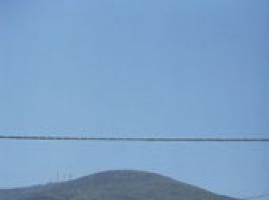
Peter Nestler
Verteidigung der Zeit
Documentary | dv | color | 27:0 | Germany | 2007
Peter Nestler, geboren 1937 in Freiburg im Schwarzwald. Über Lahr/Baden nach Berlin. Anfang des Krieges nach Bayern, wail meine Eltern zu Recht befürchtet haben, dab da bald Bomben fallen. In Grainau an der österreichischen Grenze Volksschule. Nach dem Krieg die Scheidung meiner Eltern. Aufteilung der Geschwister, zwei bei meiner Mutter, ich und die älteste Schwester bei meinem Vater. Internat. Weil es nicht so einfach war, die Kinder grobzuziehen zu Hause. Ab fünfzehn per Autostop durch Frankreich, Italien. Nach der Handelsschule endgültig von zu Hause weg. Fabrikarbeit. Zur See gefahren. Dann wieder zurück in den Familienbetrieb des Grobvaters und und der Restfamilie in Lahr. Abgebrochen, weil es aussichtslos war, nur für den Erwerb tätig zu sein. Malereistudium in München. Siedbruck in Stuttgart in der Werkstatt von Willi Baumeister, die industriell weitergearbeitet hat. Nicht mehr zu Lebzeiten von Baumeister. Wieder zurück nach München. Kleine Statistenrollen als Nebenerwerb. Ersten Rollen mit der Absicht, aus dem Geld Filme zu machen. Dann in den frühensechziger Jahren Film - und Fernsehrollen, die immer wieder zu eigener Filmarbeit geführt haben, kurzen Dokumentarfilmen. Das ging bis 1965. Dann war es schwer, weiter Geld auzutreiben. Emigration nach Sweden, das Land meiner Mutter. Heirat 1966 in Hungarn. Dann kam die Familie in Scheden. Da auch noch Waldarbeit und Fabrikarbeit, bis ich endgültig Fub gefabt hatte mit Film beim schwedischen Fernsehen. Arbeit mit Kinderprogrammen. Teils eigene Filme, teils Filme für die Dokumentarfilmabteilung. Dann in der Hauptsache eingestellt, um Filme aus Ausland eizukaufen. In den letzten Jahren keine Dokumentarfilme mehr für das schwedischen Fernsehen, sondern auf Free lance-Basis in dienstfreier Zeit. Filme, die oft in Deutscland finanziert wurden. Vier Kinder sind grob geworden in Schweden.
Catalogue : 2008Wie macht man Glass? Partie 1 / Handwerklich | Documentary | 16mm | black and white | 24:0 | Germany | 1970

Peter Nestler
Wie macht man Glass? Partie 1 / Handwerklich
Documentary | 16mm | black and white | 24:0 | Germany | 1970
Wie macht man Glas? (handwerklich) Im Frühjahr 1970 in Schweden gefilmt von Peter und Zsoka Nestler. Antike Glasgefässe und dann die Herstellung von Glas und Gläsern der waldreichen Landschaft Smaland. Mit der Kamera wird beobachtet und entdeckt, gleichzeitig ein chronologisches Beschreiben der Arbeitsgänge. Das Zusehen ist Bewunderung und Staunen über die Bewegung, das Material, das Licht und die Kunstfertigkeit der Glasmacher.
Peter Nestler, geboren 1937 in Freiburg im Schwarzwald. Über Lahr/Baden nach Berlin. Anfang des Krieges nach Bayern, wail meine Eltern zu Recht befürchtet haben, dab da bald Bomben fallen. In Grainau an der österreichischen Grenze Volksschule. Nach dem Krieg die Scheidung meiner Eltern. Aufteilung der Geschwister, zwei bei meiner Mutter, ich und die älteste Schwester bei meinem Vater. Internat. Weil es nicht so einfach war, die Kinder grobzuziehen zu Hause. Ab fünfzehn per Autostop durch Frankreich, Italien. Nach der Handelsschule endgültig von zu Hause weg. Fabrikarbeit. Zur See gefahren. Dann wieder zurück in den Familienbetrieb des Grobvaters und und der Restfamilie in Lahr. Abgebrochen, weil es aussichtslos war, nur für den Erwerb tätig zu sein. Malereistudium in München. Siedbruck in Stuttgart in der Werkstatt von Willi Baumeister, die industriell weitergearbeitet hat. Nicht mehr zu Lebzeiten von Baumeister. Wieder zurück nach München. Kleine Statistenrollen als Nebenerwerb. Ersten Rollen mit der Absicht, aus dem Geld Filme zu machen. Dann in den frühensechziger Jahren Film - und Fernsehrollen, die immer wieder zu eigener Filmarbeit geführt haben, kurzen Dokumentarfilmen. Das ging bis 1965. Dann war es schwer, weiter Geld auzutreiben. Emigration nach Sweden, das Land meiner Mutter. Heirat 1966 in Hungarn. Dann kam die Familie in Scheden. Da auch noch Waldarbeit und Fabrikarbeit, bis ich endgültig Fub gefabt hatte mit Film beim schwedischen Fernsehen. Arbeit mit Kinderprogrammen. Teils eigene Filme, teils Filme für die Dokumentarfilmabteilung. Dann in der Hauptsache eingestellt, um Filme aus Ausland eizukaufen. In den letzten Jahren keine Dokumentarfilme mehr für das schwedischen Fernsehen, sondern auf Free lance-Basis in dienstfreier Zeit. Filme, die oft in Deutscland finanziert wurden. Vier Kinder sind grob geworden in Schweden.
Catalogue : 2008Wie macht man Glass? Partie 2 / Maschinell | Documentary | 16mm | black and white | 24:0 | Germany | 1970

Peter Nestler
Wie macht man Glass? Partie 2 / Maschinell
Documentary | 16mm | black and white | 24:0 | Germany | 1970
Wie macht man Glas? (maschinell) Im Sommer 1970 in Schweden und Westdeutschland gefilmt von Peter und Zsoka Nestler. Das Formen von Glas in Maschinen und Automaten der Industrie, die Anstrengung der Glasmacher und ihr immer noch handwerkliches Geschick an dem heissen Glas der schmelzenden Flammen, an dem kalten Glas der rotierenden Schleifscheiben.
Peter Nestler, geboren 1937 in Freiburg im Schwarzwald. Über Lahr/Baden nach Berlin. Anfang des Krieges nach Bayern, wail meine Eltern zu Recht befürchtet haben, dab da bald Bomben fallen. In Grainau an der österreichischen Grenze Volksschule. Nach dem Krieg die Scheidung meiner Eltern. Aufteilung der Geschwister, zwei bei meiner Mutter, ich und die älteste Schwester bei meinem Vater. Internat. Weil es nicht so einfach war, die Kinder grobzuziehen zu Hause. Ab fünfzehn per Autostop durch Frankreich, Italien. Nach der Handelsschule endgültig von zu Hause weg. Fabrikarbeit. Zur See gefahren. Dann wieder zurück in den Familienbetrieb des Grobvaters und und der Restfamilie in Lahr. Abgebrochen, weil es aussichtslos war, nur für den Erwerb tätig zu sein. Malereistudium in München. Siedbruck in Stuttgart in der Werkstatt von Willi Baumeister, die industriell weitergearbeitet hat. Nicht mehr zu Lebzeiten von Baumeister. Wieder zurück nach München. Kleine Statistenrollen als Nebenerwerb. Ersten Rollen mit der Absicht, aus dem Geld Filme zu machen. Dann in den frühensechziger Jahren Film - und Fernsehrollen, die immer wieder zu eigener Filmarbeit geführt haben, kurzen Dokumentarfilmen. Das ging bis 1965. Dann war es schwer, weiter Geld auzutreiben. Emigration nach Sweden, das Land meiner Mutter. Heirat 1966 in Hungarn. Dann kam die Familie in Scheden. Da auch noch Waldarbeit und Fabrikarbeit, bis ich endgültig Fub gefabt hatte mit Film beim schwedischen Fernsehen. Arbeit mit Kinderprogrammen. Teils eigene Filme, teils Filme für die Dokumentarfilmabteilung. Dann in der Hauptsache eingestellt, um Filme aus Ausland eizukaufen. In den letzten Jahren keine Dokumentarfilme mehr für das schwedischen Fernsehen, sondern auf Free lance-Basis in dienstfreier Zeit. Filme, die oft in Deutscland finanziert wurden. Vier Kinder sind gross geworden in Schweden.
Gerald Nestler
Catalogue : 2015COUNTERING CAPITULATION | Video | hdv | color | 11:25 | Austria | 2013
Gerald Nestler
COUNTERING CAPITULATION
Video | hdv | color | 11:25 | Austria | 2013
COUNTERING CAPITULATION engages with the inquiries following the Flash Crash of May 6, 2010, an event that went down as the biggest one-day market decline in financial history. Focusing on a remarkable forensic analysis that not only contradicted the official findings of the regulatory authorities and shed light on the impact of algorithmic trading but also developed tools to visualize material processes that operate beyond human perception, Nestler argues that in the current legal framework evidence of market events can only be produced by a double figure of the expert witness: when the (forensic) analyst is joined by a whistleblower or informant. With this ambivalent, contingent and marginal figure at its heart—a renegade, a traitor—COUNTERING CAPITULATION proposes a multilayered, transdisciplinary artistic practice: creating narrative instabilities that coagulate dissent into insurrection by enhancing resolution in the technological, social as well as legal meanings of the term. The video concludes with a call for renegade solidarity between the general public and whistleblowers as the contemporary figures of insurrection to counter the excesses of (automated) evaluation and decision-making, not only as regards financial markets but black box regimes in general.
Gerald Nestler combines theory with video, installation, performance, speech and text to interrogate the ideological, methodological and fictive narratives of finance and their role in current biopolitics as well as contemporary art in particular. After graduating from the Academy of fine arts Vienna (1992) he conducted artistic fieldwork as broker and trader (1994-97). He lectures at Webster University Vienna and is completing a PhD at the Centre for Research Architecture, Goldsmiths, University of London. Selected recent exhibitions: The New Derivative Order (kunstraum Bernsteiner, Vienna, 2012), Cargo Carry Cult (Kunsthalle Wien, 2013), Forensis (curated by Anselm Franke and Eyal Weizman, HKW, Berlin, 2014), Social Glitch (kunstraum NOE and other venues in Vienna, in prep., 2015). Recent publications: editor of Kunstforum International 200/201 on art and economy (with D. Buchhart, 2010), Paratactic Commons (amber Art+Technology Festival Istanbul), What’s next. Art after the crisis (eds. Johannes M. Hedinger & Tobias Meyer, Kadmos, 2013), Forensis. The Architecture of Public Truth (ed. Forensic Architecture, Sternberg, 2014).
Yves Netzhammer
Catalogue : 2014Vororte der Körper | Experimental fiction | digibeta | color | 17:10 | Switzerland | 2012
Yves Netzhammer
Vororte der Körper
Experimental fiction | digibeta | color | 17:10 | Switzerland | 2012
A consequential animation film which casts the medium of film back on its origin, the image. Beginning with divers on a platform in the sea, the viewer is simultaneously immersed in pictorial spaces in pictorial worlds, whose associative inner logic collides with the customs of conventional narration.
Yves Netzhammer, born in 1970, studied Visual Design at the Zurich College of Art and Design. Since 1997, he has been working on a widely ramified, poetic imagery cosmos. His video installations, objects, slide shows and drawings fascinate through their bodily charisma and their formal clarity. The playful recombination of elements which seemingly can not be combined leads to the threshold of our existence?s dark side: Dulcet aspects interlock with displeasing ones, the dead melts with the alive into creatures never seen before, and the depicted scenarios run from microscopic to giant scales. Solo exhibitions include Kunstmuseum Bern, Switzerland, (2012), Liverpool Biennial, SFMOMA (2010), San Francisco (2008), Venice Biennale (2007), Karlskirche Kassel (supporting program documenta 12, 2007), Museum Rietberg, Zürich (2006), Kunsthalle Bremen (2005) and Helmhaus Zürich (2003). Yves Netzhammer lives and works in Zurich.
Catalogue : 2012Dialogical abrasion | Animation | 0 | color | 20:20 | Switzerland | 2011
Yves Netzhammer
Dialogical abrasion
Animation | 0 | color | 20:20 | Switzerland | 2011
An accident setting serves as the scope for a cinematic metaphorical dialogue: two figurine subjects, that ultimately crash into each other in a slow motion car crash scene, act as the framework to the formal structure of the film. Mutual subjection and impression are allegorically exemplified - the momentum of the impact of the collision subserves as a generator to astonishing artificial bodily postures, that could be translated into something like an archive of embodiments. In transitory cut scenes between the decelerated sequence of this mishap, "biographical" flashbacks are inserted.
Yves Netzhammer, born in 1970. Since 1997, he has been working on a widely ramified, poetic imagery cosmos. His video installations, objects and drawings fascinate through their bodily charisma and their formal clarity. The playful recombination of elements which seemingly can not be combined leads to the threshold of our existence?s dark side: Dulcet aspects interlock with displeasing ones, the dead melts with the alive into creatures never seen before, and the depicted scenarios run from microscopic to giant scales. Solo exhibitions include Minsheng Art Museum Shanghai (2011), Kunstmuseum Bern (2010), Palazzo Strozzi (2009), SFMOMA, San Francisco (2008), Venice Biennale (2007), Karlskirche Kassel (supporting program documenta 12, 2007), Kunsthalle Bremen (2005). Yves Netzhammer lives and works in Zurich.